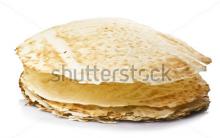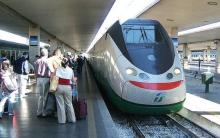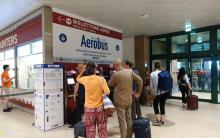The manual can be used ...
The manual contains 3000 new examples in mathematics on one of the basic topics - "Counting within 100". Like any other topic, it requires careful reflection and solid consolidation. A special feature of this edition is the large print.
As practice shows, the student has completely mastered the topic if he solves the example and writes down the answer within 4-7 seconds. In this case, we can say that the counting skill has been brought to automatism.
Each page contains 6-7 columns with an average of 35 examples. At the end of the column, the time spent by the student on the solution is recorded. In the lower left corner, check numbers are indicated: the ideal time to solve one column, satisfactory and the result that should make the student think.
It is difficult for a teacher to check such a number of examples, so it is better if the time spent on solving each column is noted by adults at home.
To achieve good results, you need to solve one page every day.
The manual can be used as additional material in math lessons, as well as for homework.
There are several books assigned to oral counting, included in the general series "3000 examples in mathematics". Each is devoted to one of the most important program topics that are studied in grades 1-4 of primary school. The number of examples in the books varies and increases from class to class, from topic to topic. In total, 3000 mathematical examples are offered to practice the skills of oral counting. This manual presents material aimed at developing skills in oral counting on the topic "Counting within 100" for grade 2. Oral counting develops the intelligence and attention of students, fosters mathematical resourcefulness and strengthens memory. The correct formulation of oral counting classes in elementary school involves daily and short (5 to 10 minutes) exercises. Sequential completion of the tasks of the manual will help students master the skills of oral counting of all forms: Fluent auditory counting. (The teacher gives the example orally and orally, after a few seconds, gets the answer.) Visual counting. (Examples are recorded, and answers are either named orally or written by students.) Combined counting. (The teacher dictates examples, and the student writes down the answers.) Oral problem solving. The counting speed comes from long training sessions. But in the first place should be the awareness of certain methods of oral calculations, and not their mechanical application. Verbal counting should precede, supplement or conclude that part of the lesson to which it is subordinated. The manual can be used in math lessons, as well as for independent work at home.
On our website you can download the book "3000 examples in mathematics. Oral counting. Counting within 100. Grade 2" Olga Uzorova, Elena Alekseevna Nefedova for free and without registration in fb2, rtf, epub, pdf, txt format, read the book online or buy a book from an online store.













 Back forward
Back forward
Attention! The slide preview is used for informational purposes only and may not represent all the presentation options. If you are interested in this work, please download the full version.
Lesson objectives:
- Improve computational skills and the ability to solve simple problems.
- Reinforce oral techniques of addition and subtraction.
- Develop cognitive interest, expand knowledge about the world around.
- Vision correction by the method of V.F. Bazarny.
- Include an element of advanced learning (to reveal the meaning of the multiplication action).
- To develop attention, logical thinking, ingenuity, ability to reason, think, interest in mathematics lessons.
Equipment:a multimedia projector, a computer, a disc with a presentation, individual differentiated tasks, an electrified distribution manual with a mathematics program to control students' knowledge, puzzles.
Forms of work:collective, individual, differentiated.
Lesson type:non-standard, lesson-journey, lesson-presentation.
I. ORGANIZATIONAL MOMENT
1). (Slide 1) Communication of the topic and purpose of the lesson
2) (Slide 2) Emotional mood for the lesson
The long-awaited call is given -
The lesson begins.
Games, jokes, everything for you!
Get to work, good hour!
II. REPEAT OF THE STUDIED MATERIAL
1. Minutes of calligraphy
Guys! Today we have an unusual lesson. I invite you to go on a sea voyage to the "Land of Knowledge".
Throughout the journey, we will consolidate the skills of addition and subtraction of numbers within 100. We will travel by ship (Slide 3)
You know that all travelers keep observation diaries.
Your observation diary will be your notebook, in which you will keep all the necessary entries. They must be clear and neat.
Be all diligent
And still attentive!
(Slide 4) - On the screen, the numbers are the numbers of the cabins. Write them down in a notebook in ascending order and you will find out the name of our ship. Checking! Well done!
So, we went on a journey. We will sail for a long time, so I suggest you play Domino.
2. (Slide 5)Domino game
Children are given cards, except for one. Her teacher puts on a magnetic board. Students solve the example on the card. The student who has the answer of the first example written on the left side of the card should go to the board. He puts the card next to the first. The example written down not by her is decided by all the students, and the one who has the answer of the second example written on the left side of the card goes to the board and puts the card to the right of the second. The game continues until the chain of all cards is placed on the stand according to the above rule. The rest of the students are controllers. They confirm or refute the answers of the students who come to the board.
3. (Slide 6) Oral counting “Mathematical nebula
(work with handouts)
I need your help - and this is your mathematical knowledge. Please finish solving the examples. (The guys count examples and show the answers)
4. (Slide 7) Math chain
Guys, look what beautiful birds are hovering over the sea! What big wings they have!
Which bird has the largest wingspan?
The mathematical chain will help us find the answer.
It must be solved correctly. The answer of this chain will be a hint
Informative minute:
“Albatrosses are seabirds. They spend most of their lives over the open sea or ocean, gliding beautifully over the waves. They reach a length of up to 1.5 meters. Albatrosses have to fly very long distances, so their wingspan reaches 4.5 meters. These birds have a highly developed ability for the planned flight. This bird can hover over the ocean for 6 days without making a single flap of its wings. They have very long wings, so albatrosses usually nest on rocky islets that rise steeply from the sea or ocean. "
5... (Slide 8) Physiotherapy for the eyes according to the method of professor V.F.Bazarny
Diagram of visual-motor trajectories (the arrows indicate the main trajectories along which the student's gaze should move in the process of performing physical education minutes: up - down, left - right, clockwise and counterclockwise, along the figure eight. Each trajectory is depicted in a different color. This makes the diagram bright and eye-catching).
5. (Slide 9) "Land of Knowledge"
The inhabitants of this country have prepared a task for you not on a computer. You need to guess math crosswords. Each of you will receive only one crossword puzzle, you need to solve it correctly and write it down in a notebook (students receive an individual differentiated task).
Checking! Well done! Coped with this task.
And now you need to go through the mathematical labyrinth.
(Slide 10) 1). Math labyrinth(solution of examples at the board with comments)
(Slide 11) - Everything in this country is magical, even sun with rays. Each ray has its own task
2). "Sun with rays"
(Slide 12) FIRST BEAM "Task"
(an electrified handout for monitoring students' knowledge. Check: if the light turns green, the problem is solved correctly, and if red, it is incorrect.
(Slide 13)SECOND BEAM "Count" (verbal counting)
What is multiplication?
This is a smart addition.
After all, it is smarter to multiply once,
Than composing the whole whole hour (collective reading of a poem)
(Slide 14) THIRD BEAM "Clever"
(math puzzle))
III. LESSON OUTCOME
(Slide 15) - Our journey is coming to an end. We are returning home to our home class.
We have not discovered all the secrets of this country. Many rays of the SUN remained unopened. And this means that we will definitely go on a sea voyage in the next lessons.
If the trip was interesting and exciting for you, then attach a red apple to this magic tree, if not very green.
IV. HOMEWORK: come up with math crosswords.
Used Books.
1. “One, two, three-answer” (mathematical entertainment for younger students) - OI Perkova .. Moscow: 1994. Publishing House of the Educational and Scientific Production Center "Energomash"
2. TG Zhigalkina “The system of games in mathematics lessons in grades 1 and 2”. M .: New school, 1997.
3. TI Lingo “Games. Rebus, riddles for ml. schoolchildren. ”- Yaroslavl: Development Academy, 1998.
4.R.D. Trigger "Correctional and developmental training" - Moscow. : school press. 2004
5. Internet resources.
Option 1.
Write down the number in which 2 dec. and 8 units.
Write down the number in which 6 dec.
Write down the number in which 9 dess.
Write down the number in which 10 dec.
Decrease each number by 20, write the answer under each number
Arrange the numbers in ascending order
27 4 72 6 56 34 2
Option 2.
__________________________________
47 5 82 3 68 54 8
Option 1.
1. Write down the number in which 2 dec. and 8 units.
2. Write down the number in which 6 dess.
3. Write down the number in which 9 dess.
4. Write down the number in which 10 dess.
5. Decrease each number by 20, write the answer under each number
__________________________________
6. Arrange the numbers in ascending order
27 4 72 6 56 34 2
_____________________________________
Option 2.
1. Write down the number in which 3 dec. and 7 units.
2. Write down the number in which 6 dess.
3. Write down the number in which 9 dess.
4. Write down the number in which 10 dess.
5. Decrease each number by 20, write the answer under each number
__________________________________
6. Arrange the numbers in ascending order
47 5 82 3 68 54 8
_____________________________________
In mathematics, of course, it is important to be able to think and think logically, but practice is no less important in it. Half of the mistakes in mathematics exams are made due to incorrect calculation of simple operations with numbers - addition, subtraction, multiplication, division. And it is important to practice these skills even in elementary school. In order not to miss anything, it is necessary to systematically engage with the child using special exercise books - simulators. They allow you to work out mathematical skills and abilities and bring them to automatism. The simulators are varied, it is not necessary to download all of them, one or two of your favorites are enough. The manuals can be used in working with younger students, regardless of the program in which the training is conducted.
Maths. We solve examples with the transition through a dozen.
A notebook for practicing the skills of addition and subtraction with the transition through a dozen. Not just examples, but interesting games and tasks.
Task cards. Maths. Addition and subtraction. 2nd grade
Convenient cards for second graders teacher. 2 options for addition and subtraction of the same kind. Suitable for organizing independent work in mathematics, depending on the progress in the program.
Maths. Addition and subtraction within 20. Grades 1-2. E.E. Kochurova
In different courses of mathematics, the topic of addition and subtraction within 20 is studied either at the end of grade 1, or at the beginning of grade 2. In any case, the manual will help to consolidate the studied methods of manipulating numbers; in some tasks, these methods are presented as a kind of hints. In the course of independent work with a notebook, the child is guided by the execution pattern and algorithmic instructions. The ability to use such prompts in study will allow the student not only to find and use the necessary information during the assignment, but also to carry out self-examination.
The notebook begins with practicing addition and subtraction skills within 10, this part is also suitable for first graders.
Math exercise book for grade 2
The notebook contains not only examples for addition and subtraction, but also the conversion of units to each other, and comparison of the results of the calculation (more or less).
3000 examples in mathematics (counting within 100 part 1)
Simulator with a time count. Time to mark one column of examples for the solution and write down in the window below. Pay attention to the columns that the child solved for more than 5 minutes, which means he had difficulties in this type of examples. Examples are given for addition and subtraction within ten and with a transition through ten, addition and subtraction of tens, manipulations within a hundred.
Score from 0 to 100
This recipe gives many examples of addition and subtraction to consolidate the skills of oral counting within 100.
We count correctly. Workbook on mathematics. G.V. Belykh
The notebook is also made in the form of a simulator, solid examples and equations. It starts with counting within ten, then within a hundred (addition, subtraction, multiplication and division), ends with a comparison of equations (examples with signs greater than, less than, equal).
The manuals will be useful both for primary school teachers in their work, and for parents to study at home with children, in particular, during the summer holidays. Tasks of different levels of complexity will allow for a differentiated approach to learning.











How to get from Madrid (Barajas) airport to the city center?
How to get from Barcelona airport Plan of Barcelona airport terminal 1
Buses in Sicily Ski map with bus routes
Rent a car in spain
Main characteristics of batteries